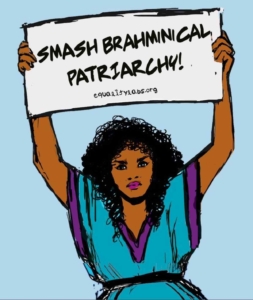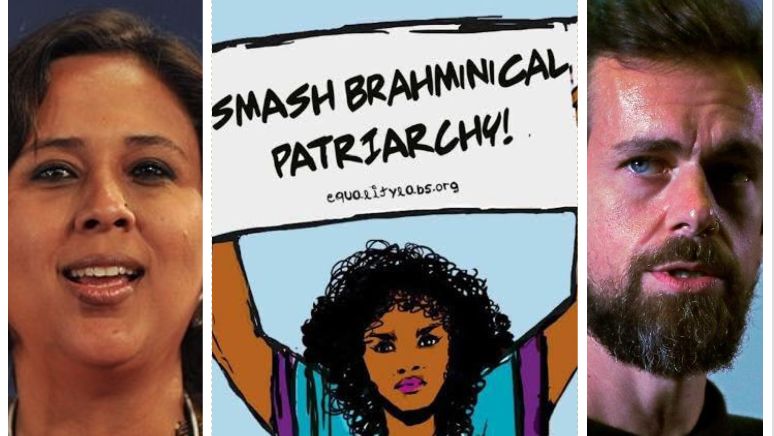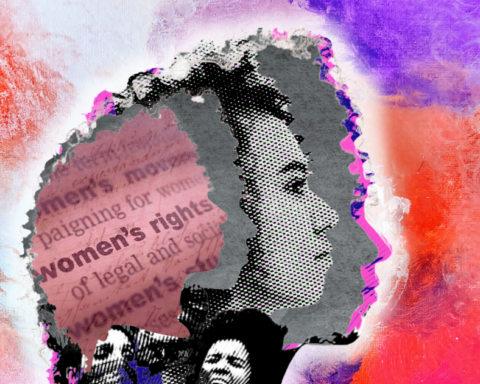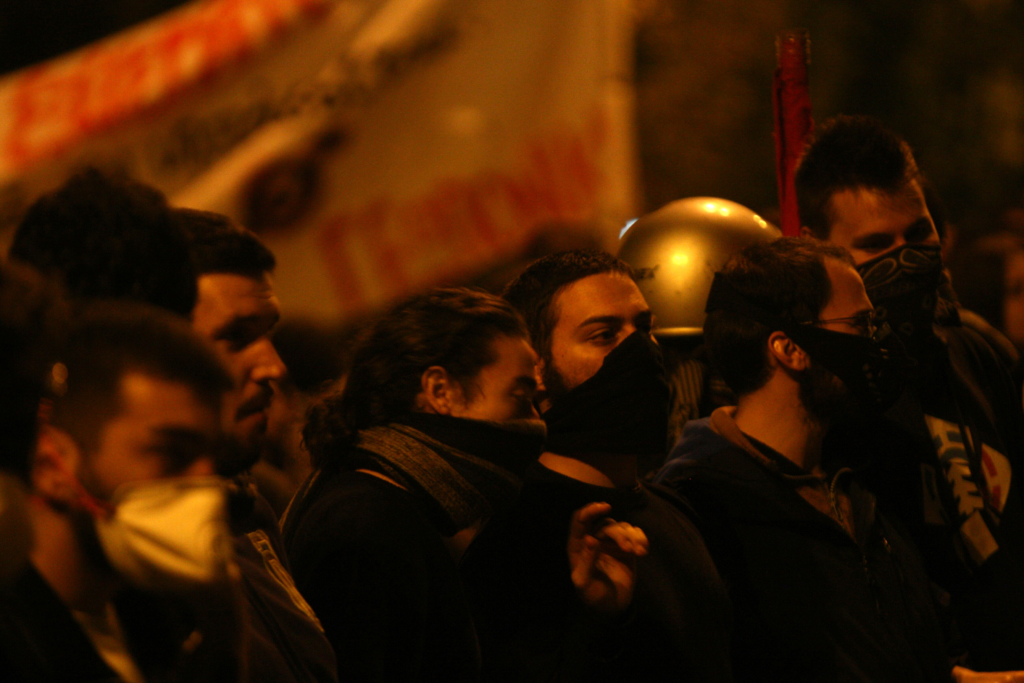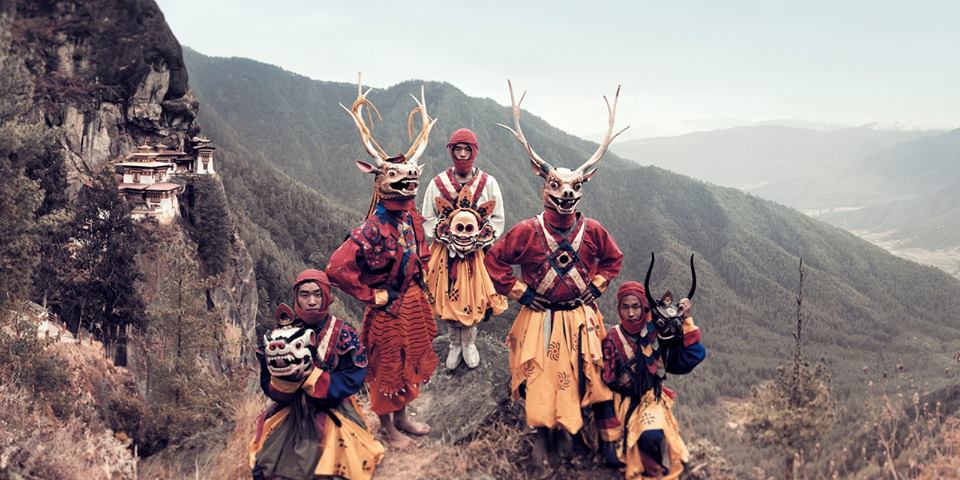Rights group: “Outrage of upper-castes only emerges in response to anti-caste action”
NEW DELHI: Nov. 21, 2018 — After Twitter CEO and Co-Founder Jack Dorsey was pictured in India holding a poster reading, “Smash Brahminical Patriarchy,” pundits across the internet exploded with comparisons of anti-Brahminism to anti-Semitism.
Last week, Dorsey attended a meeting with female journalists, activists, and writers in Delhi. During the meeting, Dalit activist Sanghapali Aruna gifted him the poster. After the meeting, Dorsey posed for a group photo while holding the poster; subsequently, Indian journalist Anna Vetticad, who was present, shared the photo via Twitter.
The photo soon created a firestorm as several prominent pundits asserted that the poster was “inciting hatred” against a specific community. Arguing that Brahmins are a persecuted group analogous to European Jews, former business executive Mohandas Pai asked, “If Jack is given a poster with anti Semitic messages in a meeting, will his team allow him to hold it up?” David Frawley, who writes about Hinduism, stated, “Anti-Brahminism is a prejudice like Anti-Semitism.” The Hindu American Foundation (HAF), a US-based nonprofit, issued a statement claiming that the term “Brahminism” is an anti-Hindu slur which “has roots in white and Christian supremacy, and anti-Semitism.”
“Brahminism traps people in a caste system of artificial social hierarchy,” remarks Arvin Valmuci of Organization for Minorities of India (OFMI) “It specifically seeks to control women because they are viewed as the gateways to protecting caste purity. This new effort to annihilate caste by challenging Brahmanical patriarchy demonstrates that the outrage of upper-castes only emerges in response to anti-caste action. These same individuals and organizations are silent when it comes to the starving children of India, gang-rapes of women and girls, murders of men and women who marry outside of caste. Their only true interest lies in protecting the system of Brahminism.”
“Brahminism is an ideology which constructs a society where a caste known as Brahmins are taught to be and treated as superior to all other people,” explains South Asian affairs analyst Pieter Friedrich. “It is the practice of caste, a system that categorizes the vast mass of humanity as subhumans whose presence or touch can pollute a Brahmin. It literally teaches that a Brahmin ‘is born as the highest on earth, the lord of all created beings.’ Anti-Brahminism is focused on deconstructing this supremacist ideology by teaching equality, encouraging inter-marriage, inter-dining, and other social interactions which are prohibited by Brahminism, and ultimately annihilating the caste system. Guidelines for Brahmins, many of which are related in the ancient verses of the Manusmriti, are very close in spirit to the Nazi Nuremberg Laws as they mandate ghettoization and oppression of non-Brahmins for the purpose of maintaining racial purity.”
Manusmriti (or “Laws of Manu”), an approximately 2,000 year-old text considered the social code of conduct for Brahminism, details how the body of a god, Brahma, was broken into four pieces, with Brahmins (the highest caste) created from his head and Shudras (the lowest caste) from his feet. “There is no code of laws more infamous regarding social rights than the Laws of Manu,” wrote Dalit civil rights champion Dr. Bhim Rao Ambedkar. “Any instance from anywhere of social injustice must pale before it.”
The rights and privileges of Brahmins — who are considered “twice-born” — are explicitly detailed in Manusmriti’s hundreds of laws. Some of these include:
– “Other mortals subsist through the benevolence of the Brahmin.”
– “Let (the first part of) a Brahmin’s name (denote something) auspicious… but a Shudra’s (express something) contemptible…. (The second part of) a Brahmin’s (name) shall be (a word) implying happiness… and of a Shudra’s (an expression) denoting service.”
– “A Brahmin who takes a Shudra wife to his bed, will (after death) sink into hell; if he begets a child by her, he will lose the rank of a Brahmin.”
– “One whose (only or first) wife is a Shudra female, the son of a remarried woman… he who instructs Shudra pupils and he whose teacher is a Shudra… he who has contracted an alliance with outcasts either through the Veda or through a marriage… he who gains his subsistence from Shudras… a shepherd, a keeper of buffaloes, the husband of a remarried woman, and a carrier of dead bodies, (all these) must be carefully avoided.”
– “Let him always delight in truthfulness, (obedience to) the sacred law, conduct worthy of an Aryan, and purity.”
– “Let the king, after rising early in the morning, worship Brahmins.”
– “Let him daily worship aged Brahmins who know the Veda and are pure.”
– “To honor the Brahmins, is the best means for a king to secure happiness.”
– “A Brahmin who subsists only by the name of his caste (jati), or one who merely calls himself a Brahmin (though his origin be uncertain), may, at the king’s pleasure, interpret the law to him, but never a Shudra.”
– “When a learned Brahmin has found treasure, deposited in former (times), he may take even the whole (of it); for he is master of everything. When the king finds treasure of old concealed in the ground let him give one half to Brahmins and place the (other) half in his treasury.”
– “A once-born man (a Shudra), who insults a twice-born man with gross invective, shall have his tongue cut out; for he is of low origin…. If he arrogantly teaches Brahmins their duty, the king shall cause hot oil to be poured into his mouth and into his ears.”
– “A man who is not a Brahmin ought to suffer death for adultery (samgrahana); for the wives of all the four castes even must always be carefully guarded.”
– “A Shudra who has intercourse with a woman of a twice-born caste (varna), guarded or unguarded, (shall be punished in the following manner): if she was unguarded, he loses the part (offending) and all his property; if she was guarded, everything (even his life).”
– “No greater crime is known on earth than slaying a Brahmin; a king, therefore, must not even conceive in his mind the thought of killing a Brahmin.”
– “A Brahmin who approaches unguarded females (of the) Kshatriya or Vaishya (castes), or a Shudra female, shall be fined five hundred (panas); but (for intercourse with) a female (of the) lowest (castes), one thousand.”
– “A Brahmin who, because he is powerful, out of greed makes initiated (men of the) twice-born (castes) against their will do the work of slaves, shall be fined by the king six hundred (panas). But a Shudra, whether bought or unbought, he may compel to do servile work; for he was created by the Self-existent (Svayambhu) to be the slave of a Brahmin. A Shudra, though emancipated by his master, is not released from servitude; since that is innate in him, who can set him free from it?”
– “The property of a Brahmin must never be taken by the king, that is a settled rule; but (the property of men) of other castes the king may take.”
– “A Brahmin, be he ignorant or learned, is a great divinity.”
– “To serve Brahmins (who are) learned in the Vedas, householders, and famous (for virtue) is the highest duty of a Shudra, which leads to beatitude. (A Shudra who is) pure, the servant of his betters, gentle in his speech, and free from pride, and always seeks a refuge with Brahmins, attains (in his next life) a higher caste.”
Born as a Dalit, which is the self-adopted term for those historically treated as Untouchables or outcastes (those considered below Shudras), Dr. Ambedkar was educated at Columbia University and London School of Economics before leading a civil rights movement in India. One of his most famous protests was the December 25, 1927 public burning of copies of Manusmriti.
In his book, The Annihilation of Caste, Ambedkar denounced “the penal sanctions of the Manusmriti.” Suggesting a legal framework was necessary to counteract Manu’s laws, he wrote: “The priestly class must be brought under control by some such legislation as I have outlined above. This will prevent it from doing mischief and from misguiding people. It will democratize it by throwing it open to everyone. It will certainly help to kill the Brahminism and will also help to kill Caste, which is nothing but Brahminism incarnate. Brahminism is the poison which has spoiled Hinduism. You will succeed in saving Hinduism if you will kill Brahminism.”
Concluding that “we must uproot Brahminism,” Ambedkar explained in a 1938 speech:
“Brahminism is an enemy which must be dealt with. By Brahminism, I do not mean the power, privileges and interests of Brahmins as a community. That is not the sense in which I am using the word. By Brahminism, I mean the negation of the spirit of Liberty, Equality and Fraternity. In that sense, it is rampant in classes and is not confined to the Brahmins alone, though they have been the originators of it. This Brahminism which pervades everywhere and which regulates the thought and deeds of all classes is an incontrovertible fact. It is also an incontrovertible fact that the Brahminism gives certain classes a privileged position. It denies certain other classes even equality of opportunity.”
Furthermore, in a 1943 speech, Ambedkar identified Brahminism as a supremacist ideology. He stated, “Long before Nietzsche was born, Manu had proclaimed the gospel which Nietzsche sought to preach. It is a religion which is not intended to establish liberty, equality and fraternity. It is a gospel which proclaims the worship of the superman — the Brahmin — by the rest of the Hindu Society. It propounds that the superman and his class alone are born to live and to rule. Others are born to serve them, and to nothing more. They have no life of their own to live, and no right to develop their own personality.”
According to a November 17 report by The New York Times, “The Dalit population, now estimated at more than 300 million, has been abused for as long as anyone can remember.” Although India’s 1950 constitution abolished the practice of Untouchability, it remains widespread and the practice of caste remains legal. The Times further reports, “95 percent of Indians still marry within their caste, experts say. And recent studies show income and education levels correlate very closely with caste…. The number of caste-based crimes has increased 25 percent since 2010, reaching nearly 41,000 cases in 2016, the last year on record.”
Speaking about the poster, Thenmozhi Soundararjan says, “The act of giving was an act of sharing our struggles and also the urgency of gender-based violence against Dalit women in India.” The Executive Director of Equality Labs, a South Asian community outreach organization, Soundararajan is also the co-creator of the “Smash Brahminical Patriarchy” poster. In an interview with The Indian Express, she states, “We have just opened the conversation with #MeToo India and yet no one is talking about Tamil Nadu’s Raja Lakshmi the 13-year-old who was decapitated by her perpetrator for speaking out about her harassment. How many Raja Lakshmis must die before our cries are heard? Sharing art that reflects our urgency and our pain is a way of connecting the world to our vital movements of justice, healing, and accountability related to caste apartheid. Only the most cynical troll would try to pervert the call for justice. For me, if these casteist trolls spent even one ounce of this time raising the issues of caste and gender atrocity instead of this faux outrage we would not have to create posters like this.”
At a 2015 conference co-hosted by OFMI to examine “pan-Brahminism in South Asia,” ethnic studies professor Dr. Amrik Singh noted, “Our belief systems make us what we are. So, all humans are created equally, including Brahmins…. It’s the ideology, not human beings — human beings, all are created equally.” Valmuci agrees with Singh, adding, “The same subjugation of people upheld by Brahminical patriarchy is unfortunately present in every community in the world. Even Dalits fall prey to practicing Brahminical patriarchy. Smashing Brahminical patriarchy means nothing less than persuading the whole world of the truth of equality, liberty, and fraternity. We want a future where the names of the four castes — Brahmin, Kshatriya, Vaishya, and Shudra — are abandoned and forgotten along with the hierarchy based on birth which those names create.”
Responding to allegations that use of the term “Brahminism” is analogous to anti-Semitism, Friedrich says, “HAF banks on American ignorance of the finer details of Indian religion and politics to propagandize dissent against religious nationalism, cultural supremacy, and Hindutva (a term with which most Americans are entirely unfamiliar) as ‘Hinduphobic’ — a strategy to corral and isolate nonconformists.” Opposition to Brahminism, he says, must be understood as a rejection of supremacy. “Comparing anti-Brahminism to anti-Semitism is not only logically absurd and intellectually dishonest, but it’s a real insult to those who suffered under the Holocaust. Anti-Brahminism is more accurately compared to anti-Nazism. Brahminism is a branch in the same tree as Nazism. Both are rooted in the philosophy of Aryanism, which focuses on dehumanization of others, social stratification and segregation, and belief in a supreme, pure race. The supposed superiority of Aryans is advanced by both ideologies to justify subjugating others and treating supposed non-Aryans as inferior. That’s exactly the belief system which led to the persecution of the Jews just as it leads today to the persecution of Mulnivasi Bahujans.”
HAF claims that “Brahminism was invented by 18th and 19th century European Indologists to describe and define Hinduism.” However, according to sociopolitical activist and analyst Dr. Manisha Bangar, the battle against caste traces back for thousands of years. “The argument given by mischievous Brahmin pseudo-historians that the caste/varna system is a British or Western construct or, at best, was created by Muslim invaders, is untenable and steeped in falsehood,” explains Dr. Bangar. “If that is true, then against what social order was Siddhartha Gautama Buddha fighting over 2,500 years ago? What were Kabir and Ravidas and Guru Nanak speaking against when they exposed caste discrimination and called for a society of equality?”
“This week we celebrate the birthday of Guru Nanak, the first Sikh Guru,” says Balbir Singh Dhillon, the president of West Sacramento Sikh Gurdwara. “Our Guru worked to liberate the downtrodden from the shackles of Brahminism and other teachings designed to exploit people. He taught us a new path where there is no Hindu and no Muslim, where we reject castes and classes, and where we recognize the Lord’s light within all. Our Gurus brought the Order of the Khalsa to the Shudra and the Dalit in order to uplift the lowest of the low. Following their example, we call for an end to Brahminism, patriarchy, and every system of oppression.”
Bhajan Singh, the founder of OFMI, states, “Denial of the existence of Brahminism is part of the agenda of the Rashtriya Swayamsevak Sangh to rewrite history.” The RSS, a nationalist paramilitary in India whose members include the Prime Minister, President, and Vice President, has a stated goal of declaring India a Hindu State. In recent years, it has aggressively pursued revision of school textbooks; most recently, Rajasthan State Education Minister Vasudev Devnani presented books produced by the RSS as models for new curriculum.
“The RSS isn’t confining its efforts to distort history to India, but extending its reach even into American classrooms,” notes Singh. He points to the years-long California textbook controversy which concluded in 2017 with adoption of a multitude of changes demanded by HAF and affiliated lobbyists. “The Hindu American Foundation worked to erase all references to how Guru Nanak challenged the authority of Brahmins and the caste order, as well insert claims that Bhagats like Kabir did not actually oppose caste. Their efforts were funded by RSS agents. HAF hired Murali Balaji as their Director of Education and Curriculum Reform in 2013 with money from the Uberoi Foundation. The Uberoi Foundation is chaired by Ved Nanda, who is director of the Hindu Swayamsevak Sangh in America. The HSS is the international wing of the RSS.”
In conclusion, Singh points to a passage by Kabir, a weaver who lived in Uttar Pradesh in the 15th century. Kabir wrote:
“In the dwelling of the womb,
there is no ancestry or social status.
All have originated from the Seed of God.
Tell me, O Pandit, O religious scholar:
since when have you been a Brahmin?
Don’t waste your life by
continually claiming to be a Brahmin.
If you are indeed a Brahmin,
born of a Brahmin mother,
Then why didn’t you come by some other way?
How is it that you are a Brahmin,
and I am of a low social status?
How is it that I am formed of blood,
and you are made of milk?”
